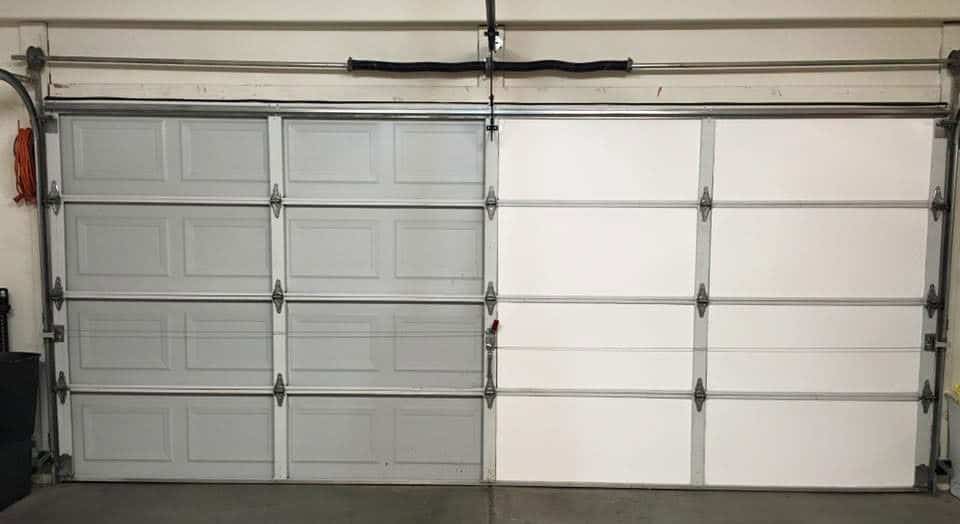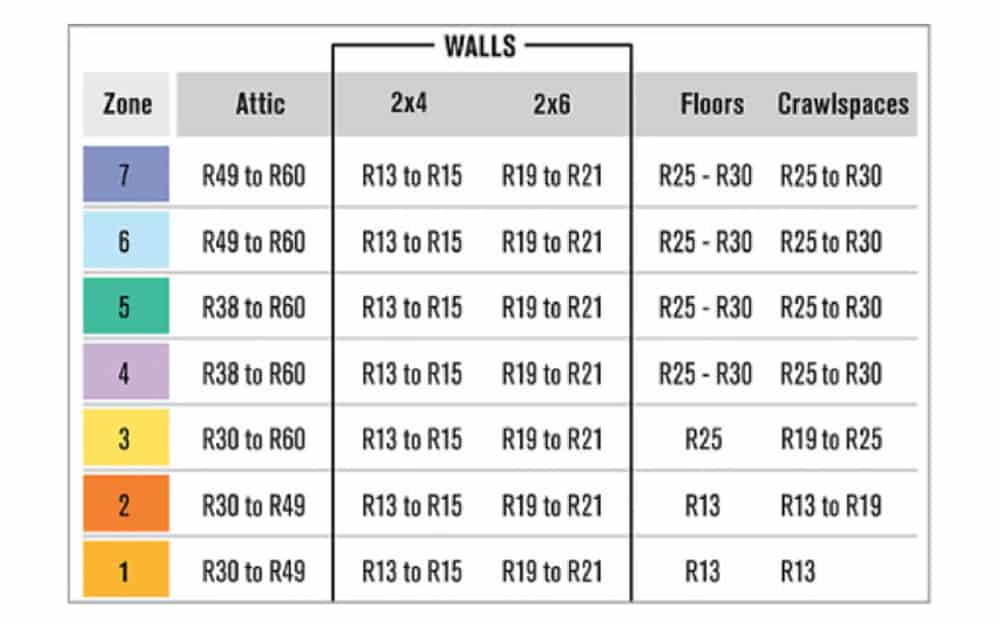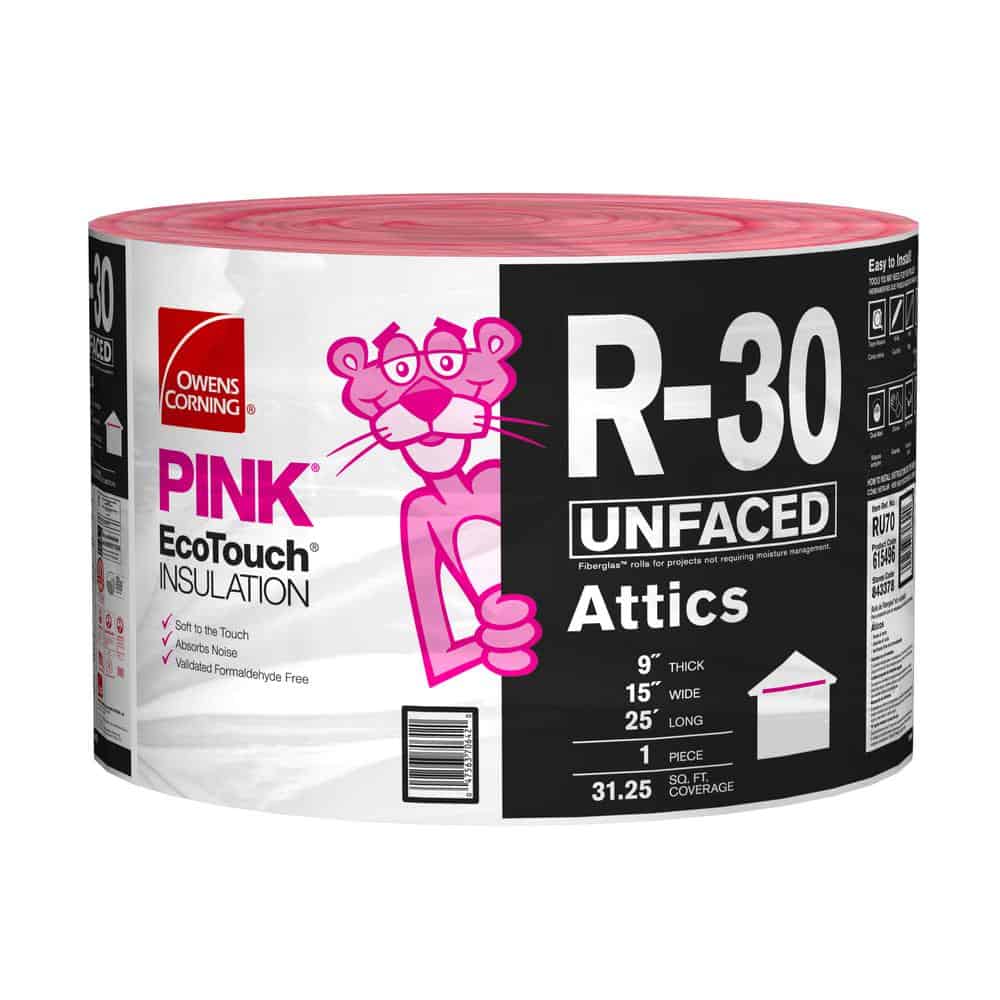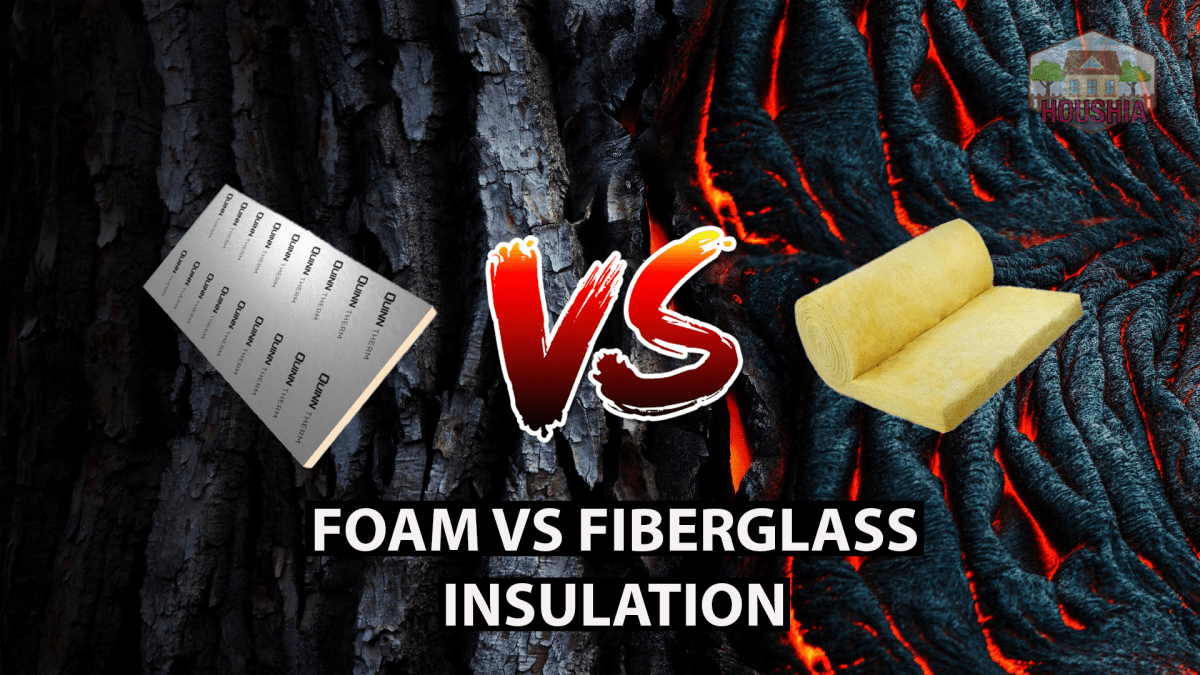When you think of how you can manage your home temperature, you usually don’t think of your garage, but this can have a significant impact on how you heat and cool your home- this is often true if your garage is integrated in to the house.
When shopping the market for a garage door, you’ll probably find a pre-insulated or maybe a wooden door- which is an excellent insulator. However, if you have an existing garage door that’s not insulated, there are several insulation options.
From the pre-cut panels, reflective foils, to the spray foam insulation, choosing one for your garage door can be a daunting experience. Over the years, some insulation types have become increasingly more popular than others. Fiberglass and the rigid foam insulation, for example, are the two insulation materials that are currently dominating the market.
To help you make an informed decision, we’ve thoroughly reviewed the two insulation types while highlighting their advantages and disadvantages. There are a few gotchas that you should be aware of when deciding on an appropriate insulation for your garage door.
So I encourage you to read to the end as there’s a couple of points that I think will surprise you.
Why You Need an Insulated Garage Door

Insulating any part of your home is a worthwhile investment that comes with several advantages.
Here are the reasons why insulating your garage door is essential.
Energy Conservation
Most garages tend to act as a separation zone between the adverse outdoor weather and the heated indoors. When this buffer zone is adequately insulated, a gust of cold air won’t be getting into your home. Also, the heater won’t need to work as hard, so you’ll save on the heating bills.
Boosts Durability- Impact Resistance
A layer of insulation on your garage door makes it more durable. If you have kids, they will probably mess around in your garage, either with their bikes or basketball. Insulating the door will help reduce the impacts of wear and tear.
Added Convenience
At some point, most homeowners would want to use their garage either for storage or as a workplace. Insulating your garage door helps minimize heat losses, and this keeps the space warmer. The insulating material also helps with noise dampening. The latter is an added benefit that makes working in your garage more convenient.
Safety of Your Belonging
Homeowners who use their garages for storage purposes have a reason to consider insulating their garage doors. Think of those cans of paint or the fertilizers you’ve stacked in the corner of your garage. Extreme cold conditions will probably do them more harm than good.
During winter, your car may also suffer from the freezing conditions in your garage, but with the right insulation in place, this won’t happen. The vehicle will start even after months of sitting unused in the garage.
How Do I Choose My Garage Door Insulation
Now that you want to insulate your garage door, what are the guiding principles to picking the best material for your specific needs? If this is the question, here are some important considerations to keep in mind.
- Garage door insulating kits come with either a reflective foil or insulating panels. Reflective foils are used to line the inside of the garage door and are available in single or double foil. On the other hand, insulation panels are the most preferred due to their rigid structure and excellent thermal resistance.
- Panel kits often come in pre-cut sizes that fit inside the door frame channels. They also offer an easy installation option. For this type of insulation, there are two distinct insulating materials; foam panels and fiberglass panels.
NOTE:
There are a couple of factors that will help you make the right choices before we look at the two types of insulating panels. These are;
The R-Value of the Insulating Panel

The R-Value of insulation material is a measure of how the insulation resists heat flow. The higher the R-value, the better the heat-insulating properties. For homeowners looking for an insulating material that will remain relevant during the adverse cold seasons, an R-value of 12 or higher is a good pick. The catch here is that, the higher the R-value, the higher the weight per square foot.
The Resultant Weight of the Your Garage Door
The weight of the insulation panel will add to the overall weight of the door, and this can have an impact on the opening and closing of your garage door. Before picking an insulating panel, think about the springs on your garage door. Are they rigid enough to support an extra weight? If not, you might want to re-balance the springs or even consider a replacement.
Fireproofing Properties
While trying to insulate your garage, you don’t want to turn it into a probable fire hazard. According to Energy.gov, fire resistance is one of the crucial factors to consider when picking any insulating material.
Both fiberglass and foam insulating panels have excellent fire resistance and air intrusion properties. The latter is important since the lack of oxygen causes the fire to extinguish itself.
Insulation Foam Board or Fiberglass- Which One is better?
Before jumping to a conclusion, let’s look at each of the two insulating options. Which one is better for insulating metal doors? What are the advantages and their respective disadvantages?
Foam Board Insulation

This type of insulation comprises of either polystyrene, polyurethane, or Polyisocyanurate materials. Foam board insulation or commonly, Rigid Foam Insulation can be used to insulate almost any part of your home.
Foam boards come in large sheets, and you may need to cut it to fit the intended spaces. A typical sheet will measure 4 X 8-foot with a thickness ranging from ½ an inch to 4 inches. Due to their high R-value per inch of thickness, foam board insulation is best for garage doors that can support a limited additional weight.
Some of the advantages of foam insulation over fiberglass are;
Pros
- A higher insulating value for relatively little thickness
- They provide slightly better insulation than fiberglass
- They are excellent for insulating metal doors.
- It can block thermal short circuits when installed continuously over frames or joints.
Cons
- A bit costly compared to the fiberglass panel.
- Requires accurate dimensioning to avoid several pieces going to waste
Fiberglass Panels

Unlike the rigid foam panels, fiberglass is flexible, and it comes in a soft feel. They are available in rolls of varying dimensions. An individual piece of fiberglass panel can have a thickness varying from 3.5 to 12 inches. A roll is available in lengths ranging from 24 to 32 feet.
The thermal efficiency of a fiberglass panel is due to the millions of air pockets that act as a thermal barrier. Below are some advantages and disadvantages of using a fiberglass panel.
Pros
- It’s cheaper compared to foam board insulation.
- Very little goes to waste. Unlike rigid foam, which creates smaller unwanted pieces (when cutting), torn fiberglass is reusable.
- Very flexible to use- can fit anywhere.
Cons
- The air pockets in a fiberglass panel can trap moisture, which causes mold growth.
- Fiberglass irritates the skin, throat, eyes, and lungs. You need to wear protective gear when doing the installation.
Installing the Garage Door Insulation
When you have decided on the best insulating panel to use with your garage door, it’s time to do the installation. For a typical garage, this is a simple, straightforward process that will take less than 30 minutes.
Some of the tools you’ll need to complete this job is a measuring tape and a utility knife.
Before insulating the door, you want to check that there’s no part of your garage that is letting in light. If any, seal them off using an appropriate material to get rid of all the insulation loopholes.
When installing the insulation, you don’t want to use any type of glue on a steel garage door. The reason is that glue doesn’t contract or expand, but your steel garage door will, this causes the insulation to shear off with time.
Another thing to look out for is the bottom seal of your garage door. You want to make sure that the seals are good enough to last you a couple of years- they will eventually shrink, and you’ll need a replacement.
With a fully insulated garage, you get a decent space with minimal heat losses and reduced sound leakages, into and out of the garage.
If you want to read a little more on where it makes sense to insulate your garage then I’ve put together several articles covering the topic in depth. I highly recommend taking a moment to read through them:
- Should I Insulate My Garage – My Story With Pictures
- Should I Insulate My Garage Ceiling – The Complete Answer
- Should I Insulate My Detached Garage – Things you Should Know
Garage Door Insulation Takeaways
Garages are not built to be airtight, so you’ll have to do thorough insulation on the walls and roof. Dealing with air gaps in any part of your home can be challenging; however, it is necessary to avoid heat loss.
One of the culprits that are leaking out most of the heat in your garage is your garage door windows. Acrylic and glass windows are great to look at, but you may want to consider going without, especially if you live in a cold area.
Investing in high-quality garage doors is also an option that can save on the cost of insulation. A good quality garage door will have a quality frame, track, and rollers. Such parts will comfortably help your garage door rolls to place with minimal air gaps.
Besides insulating your garage door, making it completely airtight can be an added advantage. We’ve covered how to make the different types of garage doors airtight in this how to make a garage door air tight,
P.S.
Ok that’s it for this article. I hope you enjoyed reading it and if you think it might be useful for someone else then please share it on social media, email or your own website!
Steve

